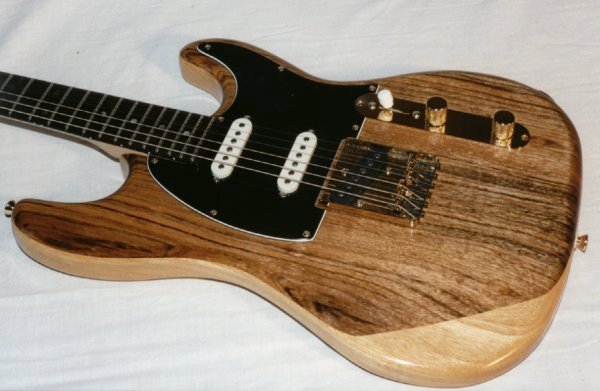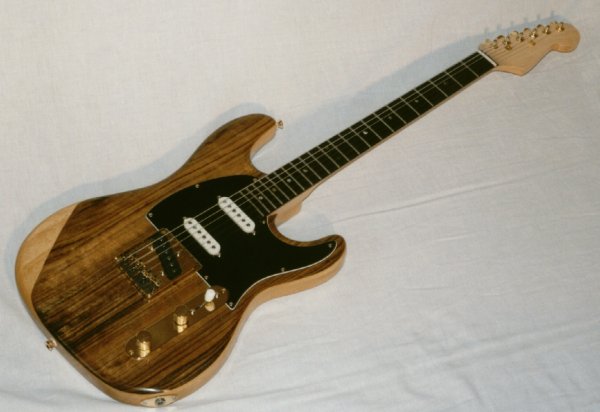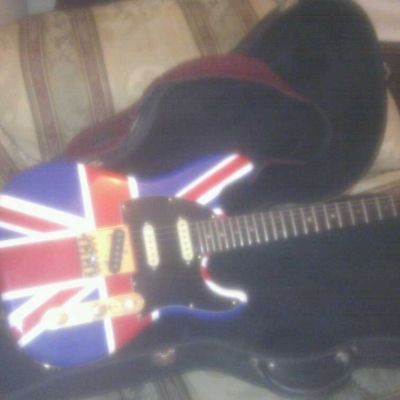
I built this guitar a very long time ago to demonstrate how a custom guitar need not be a radical new shape. It borrows elements from two of the most popular ‘bolt on’ neck guitars by combining the shape of a Strat with the hardware of a Tele. This gives you the best of both worlds, with the tonal flexibility and comfortable ergonomics of the Strat combined with the punchy bridge pickup and hardtail bridge of the Telecaster. In its current configuration the guitar leans more towards the Strat side of the tonal fence by using Strat pickups in the middle and neck positions, but there’s no reason why you couldn’t swap the pickguard for one with a single Tele neck pickup and have a Strat-shaped Tele. The pickup routs are large enough to allow the installation of Danelectro style Lipstick tube pickups if desired.

The body is made from Koto wood with a bookmatched Amazaque top. There are chambers routed under the top mainly to reduce weight, as the jury is still out regarding the tonal merits of body hollows. In my opinion, if you make the body cavity large enough, the guitar does sound different from a totally solid equivalent.
Standard Rib and Forearm contours are present, and the forearm contour exposes some of the main body wood, providing a nice contrast.
The neck is lightly flamed Maple, and the 22 fret Wenge fingerboard is home to heavy duty frets with a fretboard extension for the 22nd. Abalone dots are the only ornamentation, and the neck profile is a ‘Big Vee’ shape.
The bridge is a 6-saddle ‘deluxe’ tele job, and all the hardware is gold coloured.
The pickups are all Kent Armstrong – a Vintage Tele at the bridge and a pair of ‘Kent Specials’ in the neck and middle positions. They are wired through a standard 5-way switch giving the usual Strat tones.
In use, the ‘big Vee’ neck is very comfortable. Players more used to a conventional round neck are usually taken aback at first, then are surprised by how much more comfortable it is.
The sounds are much as you would expect from a 3 pickup bolt-on, with the koto body giving a strong presence to the higher frequencies. The guitar has good string to string definition, helped, I think, by the through-body stringing and the fixed bridge.
Apologies for the grainy pictures – they are scans of photograph prints, as this guitar was made long before digital cameras. This was the first guitar I made specifically to cold-sell. It went to a music shop in Northampton and was bought by an unknown person. A year or so ago it appeared on eBay with a horrific Union Jack stick-on covering the beautiful timber. Go figure. I would have bought it back, but it sold before I got the chance.

Why would someone do that?!